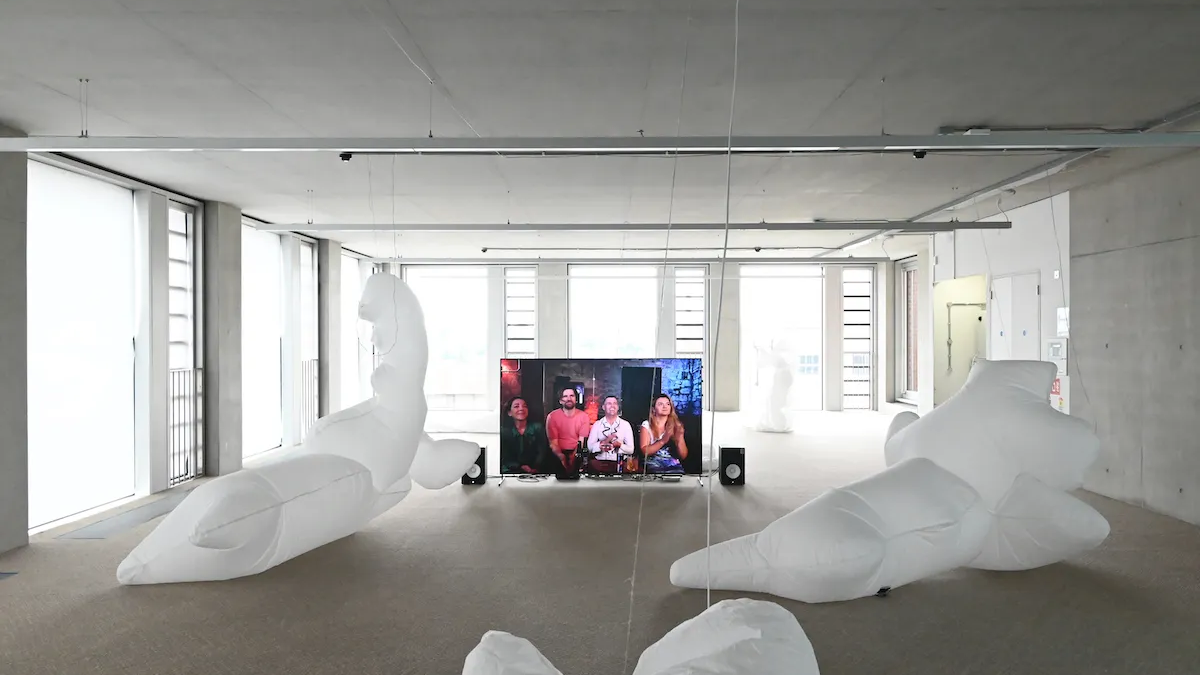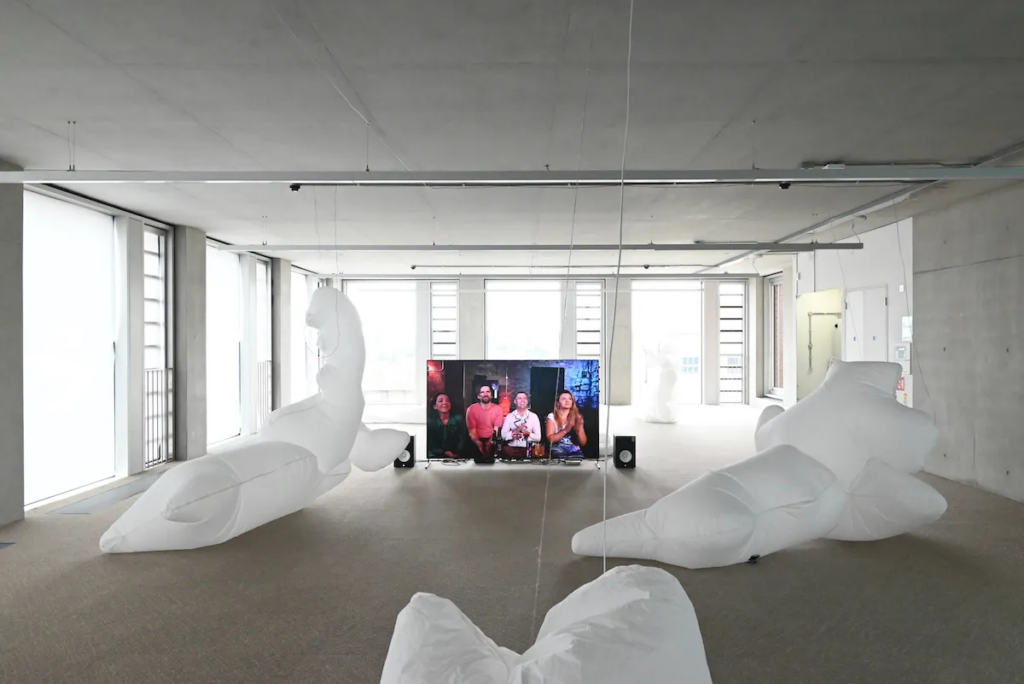
Now in its 40th year, the EVA International, in Limerick, Ireland, is more transient than other biennials like it. Rather than opening all at once, its exhibitions, events, and interventions are taking place gradually, at different points throughout the show’s run, through late October. This removes the need to see it all at once—and also enables the show to more thoroughly dialogue with the city and its history.
Guest curator Sebastian Cichocki has themed his program, “The Gleaners Society,” around the notion of citizenship. It focuses on the practice of gleaning, a term that traditionally refers to the act of collecting surplus crops following a harvest and redistributing them to people in need. Gleaning was declared illegal by the British courts in 1788, and yet, as Cichocki writes in an accompanying text, it remained a strategy of survival and resourcefulness essential to those marginalized by the emerging forces of capitalism.
Cichocki did not train as a traditional curator, although he now serves as chief curator of Museum of Modern Art Warsaw. Instead, his background is in sociology and it is this experience that has clearly informed his EVA program, which looks at art’s relationship to society, bringing ideas about farming, feeding, and nurturing to the fore. The shows suggests that art can aid in supporting political opposition and can also expand ideas of alternate methods of queer survival, specifically by holding up rural ways of living as a form of protesting societal oppression. Below, a look at a few of the best works on view at this edition of the EVA International.
My-Musical Collective and Pidsoma Shelter
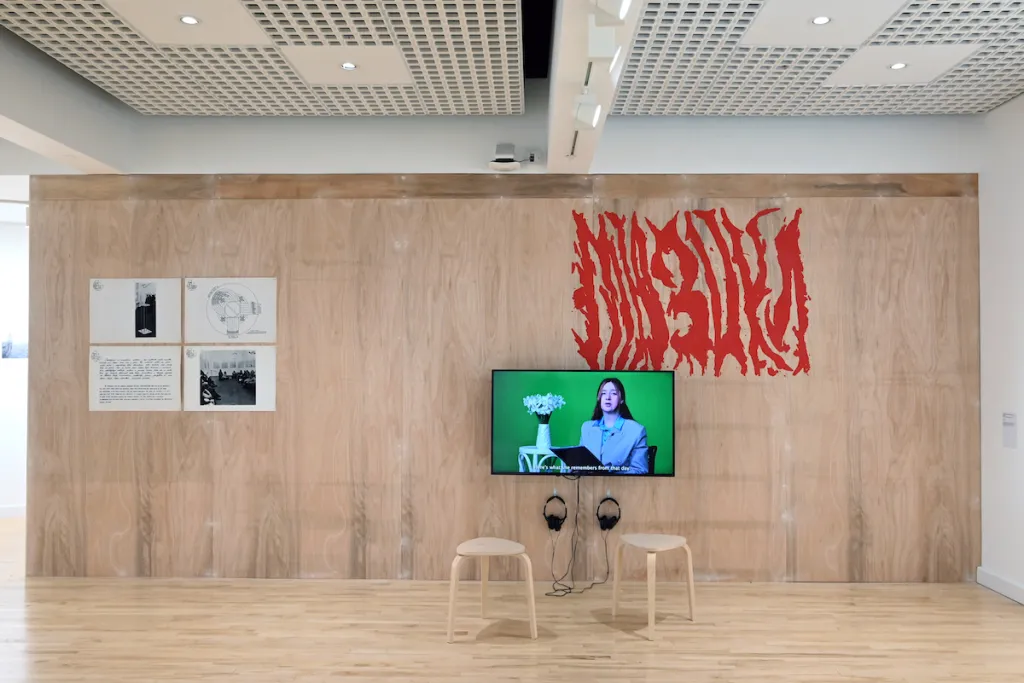
Singing, specifically the kind that can be found in musicals, recurs throughout this biennial. My-musical (We-Musical), a 2022 work by the My-Musical Collective and Pidsoma Shelter, is one of the many examples. On view at Limerick University, the film was initiated by the Lviv Kitchen Cooking Initiative, a collective established by artists and displaced people who fled from regions invaded by Russia for western Ukraine. My-music (We-Musical) follows a day in the life of their emergency shelter, punctuated by dispatches from a faux news anchor who sits facing the camera in a slightly too-big suit. The anchor reads off the day’s updates, noting, “On Day 271 of our cooking for people in need, often for a hundred people everyday… in this unforgettable moment the recipe of borscht will become a song.” The camera cuts to the kitchen, where the word “beetroot” is repeated by the cooks singing in different tenors. Their words, reverberating over the clatter of kitchen activity, sing of solidarity and of a need to nurture.
Navine G. Dossos
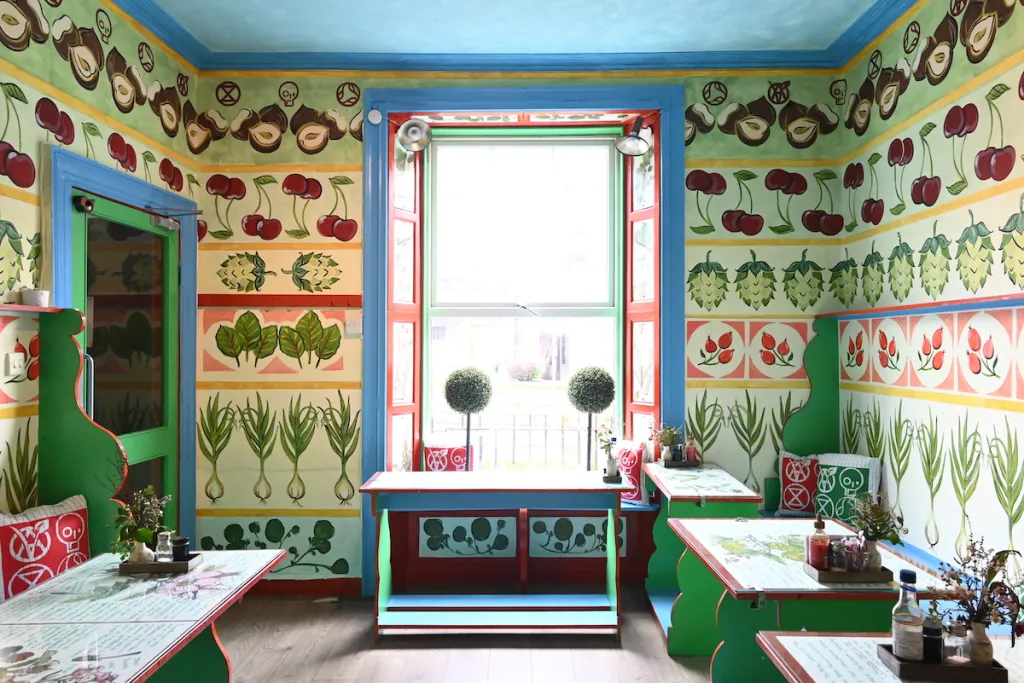
To experience Navine G. Dossos’s commission The Grove (2023), you have to take a trip to Limerick’s vegetarian cafe of the same name. The cafe, an institution in the city run by Sue Hassett, provides the context for Dossos’s large-scale murals, paintings, and tableware. Dossos worked with a botanist to excavate the history of Limerick’s food waste, looking at plants that have been sustaining the city’s communities for hundreds of years. These are then translated into exquisite wall murals around the café, with hazelnuts, cherries, wild garlic, rose hip, and watercress repeating across the walls. The paintings have the lushness of the wild—the flora seems ripe for the picking, a reminder that we can and should look to our surroundings to sustain us. In a less explicit way, the work also acknowledges the ticking clock of the climate crisis, since many of these plants are at risk of disappearing altogether as the environment undergoes significant changes. One day, these paintings might be the only representations of them we have.
Diane Severin Nguyen
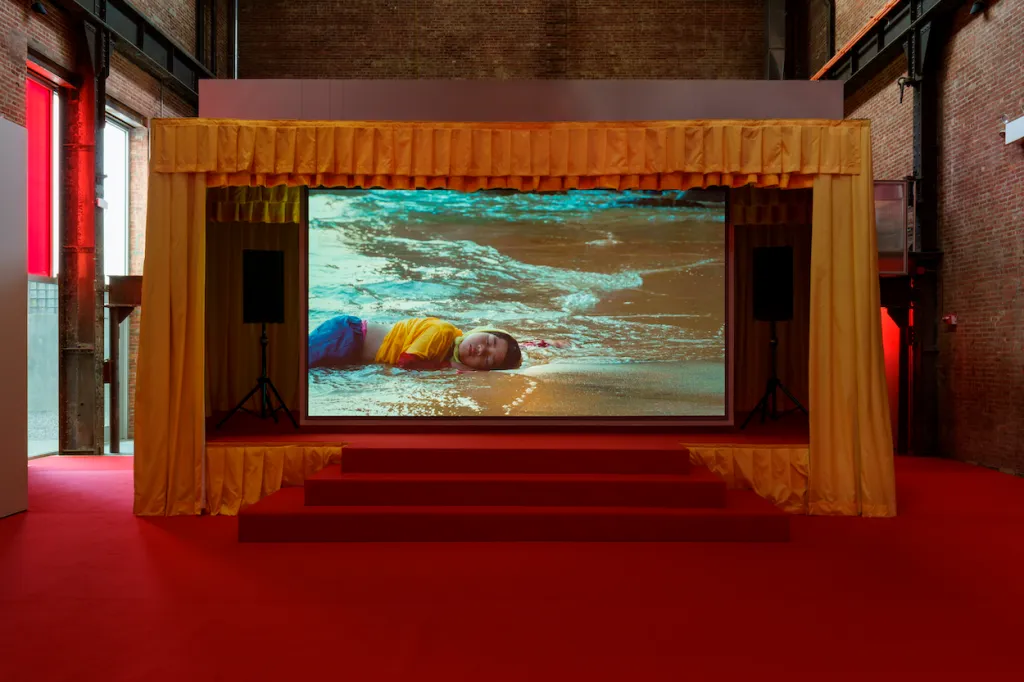
In the back of an old shop unit, now turned into the gallery 31 Nicholas Street, one can view Diane Severin Nguyen’s film If Revolution Is a Sickness (2021). Set in Warsaw, the film centers around a Vietnamese child who becomes embedded in a K-pop-inspired dance group, whose members are shown performing their choreographies in post-industrial landscapes. The film’s narration quotes the writings of Hannah Arendt, Ulrike Meinhof, Mao Zedong, and other revolutionaries, and brings forth the idea of subcultures as a place for one’s politics to grow and proliferate, particularly at formative ages. The confidence to agitate, Nguyen implies, can be acquired through the joy found through a shared interest.
Amna Walayat

These intricate paintings respond to Walayat’s identity as a Pakistani woman living in Cork, Ireland. The works take traditional techniques from Indo-Persian miniature painting as their starting point, as well as different models of motherhood, citizenship, and shame. In one work, a couple has sex while military helicopters circle overhead; all around, mythic creatures appear to be in the midst of either fighting or fucking. In another piece, titled Self portrait with Tooq (Collar), 2023, the artist is depicted against an orange background, one lifted arm holding her tooq steady as it weighs down her neck. Amid all the delicate detail, Walayat’s riotous voice can be heard, calling for an honest space for self-representation in a society that places many expectations upon her.
Slavs and Tatars
Slavs and Tatars have created interventions on this school’s grounds that explore notions of race and colonialism as they are embedded in children’s literature from former socialist nations in Eastern Europe, the Caucasus, and Central Asia. One work sees new signage mounted in the windows, in a typeface designed by the artists which spells the name of the school in Ukrainian. This project is then also represented in Ormsten House, where there is a rug which can be used for sitting and meeting. This is one of two projects at Thomond Primary School, the other being a permanent micro-forest by its gardening club, which worked in collaboration with artist Deirdre O’Mahony and Hometree, an organization whose stated goal is to fight Ireland’s declining biodiversity.
Aside from political import, these works are notable because they speak to a very specific audience—namely, the pupils, staff, and parents of the Thomond Primary School who will engage with them on a daily basis. Biennials tend to focus on nebulous concepts like “community,” producing works that are directed more at visitors than they are at locals. That’s why Slavs and Tatars’ work here is so important. It is a testament to this biennial’s direct engagement with the city and a model for other works like it to come afterward.
Kian Benson Bailes
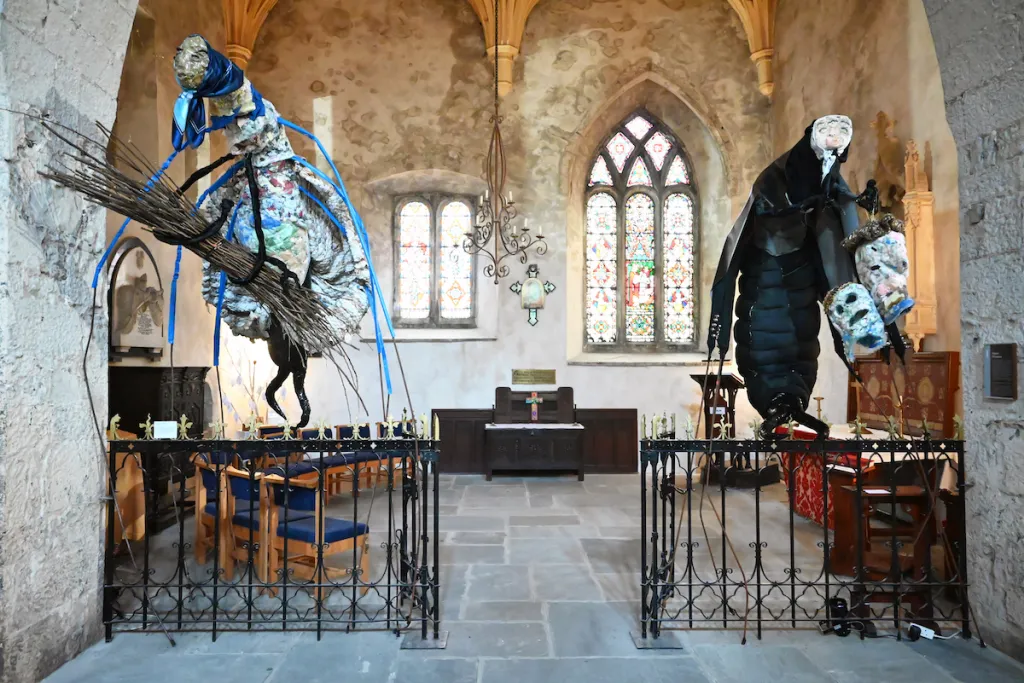
Bailes’s works, installed in St Mary’s Cathedral, lurch out from the congregational spaces. One, a large beetle body with a five-eyed human femme face, seems to come straight from rural folklore. These figures we all get told stories of as a child—some from mythology, others from hearsay—are often metaphors for the societal outcasts who get turned into monsters by people who believe they don’t align with normative structures. These works specifically speak to Bailes’s queer experience in rural Ireland. The fabrics in the work come from his family, his mother, and his grandmother, and the figures both feature a patchwork of floral and verdant prints. The works are beautiful: the figures represented may be ghoulish, but they also have a camp charm. Bailes invites his viewers to see these beings for all that they truly are.

